#deployable software
Text
Xleap: Empowering Individuals with Seamless Facilitation Software Deployment
Embrace an effective and transformative collaboration with Xleap’s facilitation software designed for individuals. Our platform offers a user-friendly interface and hassle-free deployment, ensuring a smooth experience for solo professionals and small teams. Xleap helps harness the power of streamlined communication and increases productivity. Our facilitation software with deployment for individuals is specially designed for individual empowerment. Experience the freedom to deploy our intuitive tools effortlessly, which allows you to focus on your goals without the burden of complex setups. Experience efficiency, connectivity, and productivity like never before. https://www.xleap.net/deployments
0 notes
Text
Logitech Unveils Signature Slim Keyboard Combo to Seamlessly Flow Between Work and Life at the Desk
SYDNEY, Australia. – March 27, 2024 – Today Logitech (SIX: LOGN) (NASDAQ: LOGI) introduced the Signature Slim Combo, designed to simplify the experience across personal and work computers. For people with a single workspace for both professional and personal tasks, the Signature Slim products are beautifully designed solutions that look good in the home or office. With more features than typical…

View On WordPress
#Business#carbon neutral#Compatibility#customization#Deployment#environmental#FSC#IT#Keyboard#Logitech#March 2024#monitoring#Mouse#Office#Personal#Price#Quiet Keys#Recycled#Retail#Signature Slim#Silent Clicks#SmartWheel#Software#Support#sustainability#Wireless#Workspace
0 notes
Text
How AI Writing Steers Conversational Evolution
The Marvels of Large Language Models Exposed
In the form of Artificial Intelligence it is Large Language Models (LLMs) that are upending Natural Language Processing (NLP), pushing it towards the unknown. The emerging AI prototypes are equipped with incredible potential to understand and create human-like sentences that mark the transition from traditional human-machine communication to something…

View On WordPress
#AI Innovations#Conversational Chatbots#Deployment Of LLMs#Human-Machine Interactions#Large Language Models#Natural Language Processing#NLP Models#Software Development Consulting Company#Software development solutions#Software Entwicklung Outsourcing#Virtual Assistants
0 notes
Text
ORNL Study Projects Geothermal Heat Pumps’ Impact on Carbon Emissions and Electrical Grid by 2050 - Technology Org
New Post has been published on https://thedigitalinsider.com/ornl-study-projects-geothermal-heat-pumps-impact-on-carbon-emissions-and-electrical-grid-by-2050-technology-org/
ORNL Study Projects Geothermal Heat Pumps’ Impact on Carbon Emissions and Electrical Grid by 2050 - Technology Org
A modeling analysis led by the Department of Energy’s Oak Ridge National Laboratory gives the first detailed look at how geothermal energy can relieve the electric power system and reduce carbon emissions if widely implemented across the United States within the next few decades.
ORNL study projects how geothermal heat pumps that derive heating and cooling from the ground would improve grid reliability and reduce costs and carbon emissions when widely deployed. Credit: Chad Malone/ ORNL, U.S. Dept. of Energy
Researchers created a simulation model of the mass deployment of geothermal heat pumps, or GHPs, in commercial and residential buildings from 2022 through 2050. The simulation results indicated that if GHPs, also known as ground-source heat pumps, were deployed on a national scale along with building envelope improvements in single-family homes, the stress on the power grid would be relieved, energy costs lowered and carbon dioxide emissions reduced substantially.
“GHPs have traditionally been seen as a building energy efficiency technology,” said ORNL’s Xiaobing Liu, who served as the primary researcher on the study. “This analysis found that GHPs have a tremendous impact on electric power systems by reducing the requirements in capacity, generation, and transmission, as well as carbon emissions.”
Groundbreaking numbers
GHPs provide an environmentally friendly, energy-efficient alternative to conventional heating, ventilation and air-conditioning, or HVAC, systems. They operate by transferring heat to and from the ground through underground pipes. The pipe system extracts heat from the ground to warm buildings in the winter while using the ground as a heat sink to cool buildings in the summer.
Liu said that mass GHP deployment in both commercial and residential buildings, coupled with building envelope improvements in single-family homes, can reduce more than 7,000 million metric tons of carbon emissions through 2050, with more than 3,000 million metric tons of reduction coming from the electric sector and the remaining coming from the replacement of natural gas for heating in the building sector.
“It is well understood that GHPs are beneficial for lowering building energy costs because of their high efficiency and ability to supply heat without fuel purchases, resulting in zero on-site emissions,” Liu said. “Until now, though, few studies have investigated the impacts of large-scale deployment of GHPs on the electrical grid.”
ORNL buildings and electrification researchers worked with the National Renewable Energy Laboratory, or NREL, to build co-simulations of the U.S. building stock and the electric power systems using ORNL’s GHP system simulation tool and building data available in NREL’s Energy Use Load Profiles. The first-of-its-kind study simulates the energy use impacts if GHPs were deployed into 68% of existing and new building floor space across the contiguous United States.
Researchers studied three scenarios: continuing to operate the grid as it is today; reaching 95% grid emissions reductions by 2035 and 100% clean electricity by 2050; and expanding grid decarbonization to include the electrification of wide portions of the economy, including building heating. The analysis team modeled each of these three scenarios with and without mass GHP deployment coupled with building envelope improvements in single-family homes.
“The results were developed using the current capability of existing tools and data,” Liu added. “We combined NREL’s Regional Energy Deployment System model and PLEXOS, a commercial software for more detailed simulation of electric power systems, to perform multiyear simulations of U.S. electric power systems in different scenarios in contrasting regions, in different seasons and during times of peak and low energy demand.”
Although savings in electricity demand and reduction in carbon emissions were realized in almost all regions of the country, the simulations indicated that in cold climates, GHPs are more effective at reducing carbon emissions and energy consumption compared with conventional HVAC systems as the result of displacing natural gas furnaces and reducing the use of electric heaters.
In warmer climates, such as in the South and other milder climate zones, GHPs generate higher electricity savings. Peak electric demand reduction is also highest in densely populated areas of the South.
“We showed that a mass deployment of GHPs coupled with building envelope improvements can reduce the generation and capacity needs of the U.S. electric power system by up to 11% and 13%, respectively, in 2050,” Liu said. “The peak electric demand in some hot climate zones can also be reduced up to 28%, which will ease grid operations.”
These percentages translate into saving approximately 600 terawatt-hours of electricity in 2050 while eliminating more than 5,000 billion megajoules of fossil fuels, which is equivalent to 5% of the primary energy consumed in the United States in 2022, including natural gas, heating oil and propane.
If GHP deployment were to increase steadily from 2022 through 2050, more than $300 billion cumulative electricity payments would be saved, too. Liu said this would require the deployment of approximately five million GHPs per year.
Decreasing outages
As extreme weather events continue to strain the electrical grid, extended power failures or rolling blackouts have occurred in recent years. GHPs could be a solution to improving grid stability. To prove the capability, the study analyzed the impact of mass GHP deployment on the Texas electrical grid, which experienced significant power loss with winter storms in 2021.
“During these intense weather events, mass deployment of GHPs could have improved the operation of the grid by reducing total electricity demand,” Liu said. “This preliminary analysis can provide insightful information to Texas and other regions that have experienced higher demand for electricity than the power plants can provide during periods of prolonged severe weather.”
Liu said that although the initial evaluation indicates that mass deployment of GHPs can improve grid reliability in Texas, a more detailed analysis is needed to get a precise picture of how they would perform in different regions.
Jamie Lian, who served as a coinvestigator of the study, added that if GHPs were to be deployed across the United States, many installations would be done by utilities in district-scale systems so that ground drilling can be leveraged across numerous buildings. The study provides a basis for utilities to evaluate the investment of GHP deployment.
“A lasting benefit of this study is that we’ve developed a nationwide analysis that scales up from the building analysis to the regional impact and to the entire grid,” Lian said.
Timely Tools
To better understand the cost and benefits of GHP applications, the ORNL research team has developed a consumer-friendly, web-based tool for estimating the cost and benefits of applying GHPs in residential and commercial buildings.
The free tool is openly accessible to homeowners, builders, installers, and manufacturers. It allows users to calculate the energy savings that can be achieved by GHPs when installed in any type of residential or commercial building in any U.S. climate zone. The tool leveraged ORNL’s AutoBEM software, which can automatically create a building energy simulation model for almost any existing building in the nation based on minimal information, including the building footprint, vintage, principal function and other information from DOE’s prototype building models.
“When there is a massive deployment of GHP systems, we now have a starting point for what it would look like in terms of capacity, generation, emissions, cost and resilience for the electric power systems,” Liu said. “That picture looks very promising.”
In addition to Liu and Lian, contributing researchers on the study include Xiaofei Wang, Mini Malhotra, Yanfei Li and Jyothis Anand from ORNL; Jonathan Ho and Weijia Liu from NREL; and Sean Porse and Jeff Winick, from DOE.
The analysis was funded by DOE’s Geothermal Technologies Office.
UT-Battelle manages ORNL for the DOE’s Office of Science, the single largest supporter of basic research in the physical sciences in the United States. The Office of Science is working to address some of the most pressing challenges of our time. For more information, please visit energy.gov/science.
Source: Oak Ridge National Laboratory
You can offer your link to a page which is relevant to the topic of this post.
#000#2022#300 billion#air#Analysis#applications#billion#Building#buildings#carbon#Carbon dioxide#carbon dioxide emissions#carbon emissions#climate#climate zones#commercial software#cooling#data#decarbonization#deployment#dept#economy#efficiency#Electric grid#electric power#electrical grid#electricity#electrification#Emissions#energy
0 notes
Text
A Guide to Successful ADP Workforce Implementation with Ignite HCM
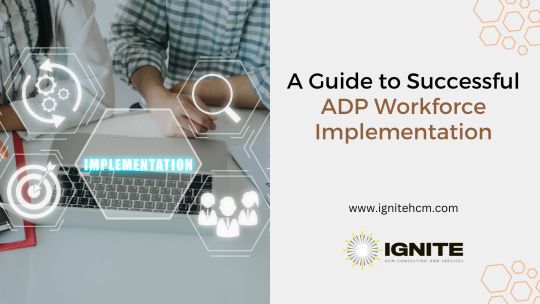
In the fast-paced world of modern business, implementing an efficient Human Capital Management (HCM) system is crucial for organizations to streamline their HR processes and maximize productivity. Among the leading HCM solutions, ADP Workforce stands out as a comprehensive platform offering a wide array of features to manage payroll, benefits, time tracking, and more.
However, the successful implementation of ADP Workforce requires careful planning, execution, and integration with other systems, such as Ignite HCM. This guide outlines key strategies and best practices to ensure a smooth and successful ADP Workforce implementation with Ignite HCM.
Define Objectives and Requirements
Before embarking on the implementation journey, it's essential to clearly define your organization's objectives and requirements. Conduct a thorough assessment of your current HR processes, identify pain points, and outline specific goals you aim to achieve with ADP Workforce and Ignite HCM integration. Whether it's streamlining payroll processing, improving employee self-service capabilities, or enhancing compliance, having a clear roadmap will guide the implementation process.
Engage Stakeholders
Successful implementation requires buy-in and collaboration from key stakeholders across departments. Involve HR personnel, IT professionals, managers, and end-users in the planning phase to gather insights, address concerns, and align expectations. By fostering open communication and involving stakeholders early on, you can ensure that the implemented solution meets the needs of all users and departments.
Data Migration and Integration
Data migration is a critical aspect of implementation, especially when integrating ADP Workforce Implementation with Ignite HCM. Ensure that your data is clean, accurate, and compatible with the new system. Work closely with your implementation team to map out data fields, establish data migration timelines, and conduct thorough testing to validate data integrity. Additionally, seamless integration between ADP Workforce and Ignite HCM is essential for real-time data exchange and synchronization across platforms.
Customization and Configuration
ADP Workforce offers a high level of customization to adapt to your organization's unique requirements. Leverage this flexibility to configure workflows, customize reports, and tailor the system to align with your specific business processes. Work closely with implementation specialists to configure ADP Workforce and Ignite HCM according to your organization's policies, compliance requirements, and industry standards.
Training and Support
Proper training is key to ensuring user adoption and maximizing the benefits of ADP Workforce Implementation with Ignite HCM. Provide comprehensive training sessions for HR administrators, managers, and employees to familiarize them with the new system's features, functionalities, and workflows. Offer ongoing support resources, such as user guides, FAQs, and helpdesk support, to address any questions or issues that may arise during and after implementation.
Testing and Quality Assurance
Thorough testing is essential to identify and address any potential issues or discrepancies before fully deploying ADP Workforce and Ignite HCM. Conduct comprehensive testing scenarios to validate system functionality, data accuracy, and integration points. Engage end-users in User Acceptance Testing (UAT) to ensure that the system meets their expectations and performs as intended in real-world scenarios.
Go-Live and Post-Implementation Support
After successful testing and validation, it's time to go live with ADP Workforce Implementation with Ignite HCM. Plan a phased rollout approach to minimize disruptions and allow for continuous monitoring and support during the transition period. Offer post-implementation support to address any post-go-live issues, provide additional training as needed, and gather feedback to fine-tune system configurations and workflows.
Continuous Improvement and Optimization
The implementation of ADP Workforce and Ignite HCM is not a one-time event but an ongoing journey towards continuous improvement. Regularly assess system performance, user feedback, and evolving business needs to identify opportunities for optimization and enhancement. Stay informed about new features, updates, and best practices provided by ADP and Ignite HCM to leverage the full potential of your HCM solution.
Conclusion
Successful ADP Workforce implementation with Ignite HCM requires careful planning, collaboration, and execution across all stages of the implementation process. By defining clear objectives, engaging stakeholders, ensuring data integrity, customizing configurations, providing comprehensive training, conducting thorough testing, and offering ongoing support, organizations can maximize the value of their HCM investment and drive business success.
for more info : https://www.ignitehcm.com/solutions/implementation
Contact : +1 301-674-8033
#ADP Workforce Implementation#ADP Workforce Management#ADP Implementation best practices#ADP software deployment#ADP Workforce Solutions integration
0 notes
Text
Seriously how do people do automated cross-platform builds? I needed to rebuild my optical bench today and oops Node on MacOS has updated and now npm won't even open, requiring manual intervention to fix 😩
0 notes
Text
Patna's Finest Software Development Company - Cybonetic Technologies Pvt Ltd
Explore a transformative experience with Cybonetic Technologies Pvt Ltd, renowned as the top software development company in Patna. Our devoted team is dedicated to delivering state-of-the-art solutions, encompassing Mobile App Development, Website Development, E-Commerce Development, software consulting, and Digital Marketing Services. Witness business expansion with our inventive and budget-friendly offerings. Contact us to collaboratively shape the future!
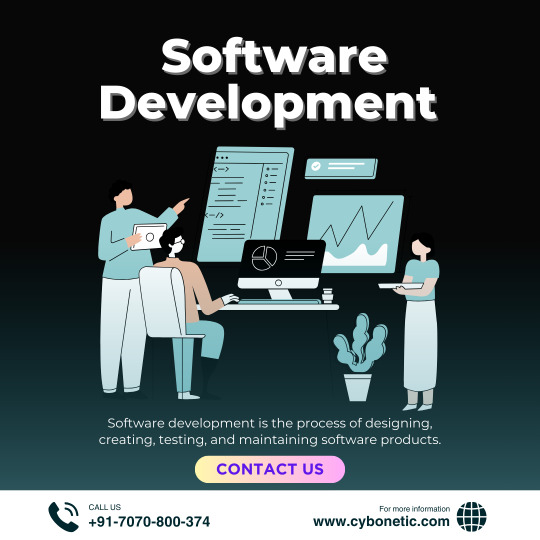
#software development#software development company in Patna#custom software applications#software developers#software development tools#programming languages#end-to-end solutions#testing#deployment#maintenance#innovative software solutions
0 notes
Text
Unveiling the World of SaaS Development: Building for Scalability and Innovation

In the rapidly evolving realm of technology, Software as a Service (SaaS) has emerged as a game-changer, revolutionizing the way software is delivered, accessed, and utilized. This blog post serves as a comprehensive guide to navigating the intricate landscape of SaaS development, emphasizing the pivotal role it plays in fostering scalability, innovation, and unparalleled user experiences.
Introduction: The introduction sets the stage by elucidating the significance of SaaS in modern business ecosystems. It highlights the transformative shift from conventional software models to the subscription-based, on-demand nature of SaaS solutions. The section emphasizes the multifaceted advantages SaaS offers, including cost-effectiveness, accessibility, and seamless updates.
Understanding SaaS Development: This segment delves into the fundamentals of SaaS development. It elucidates the core components, architectural considerations, scalability frameworks, security paradigms, and the critical emphasis on crafting exceptional user experiences. The aim is to provide a holistic understanding of what constitutes the backbone of SaaS development.
The SaaS Development Lifecycle: Breaking down the development process, this section intricately explores the phases of the SaaS development lifecycle. It covers the crucial steps, starting from the inception and conceptualization phase, transitioning through design, development, rigorous testing, deployment, and the ongoing maintenance and updates crucial for sustained success.
Challenges in SaaS Development: Addressing the complexities and obstacles inherent in SaaS development, this part sheds light on challenges such as scaling infrastructure to meet growing demands, ensuring robust security measures, and seamlessly integrating with other systems. It also emphasizes the importance of compliance in an ever-evolving regulatory landscape.
Best Practices for Successful SaaS Development: Highlighting the principles and strategies instrumental in crafting successful SaaS products, this section champions a customer-centric approach. It emphasizes the continuous evolution through customer feedback, the necessity of adaptability, and the agility to pivot in response to market needs.
Case Studies or Examples: Illustrating theory with practicality, this segment showcases real-world case studies of exemplary SaaS products. These cases highlight how adherence to best practices, innovative thinking, and meticulous development methodologies contributed to their success stories.
Conclusion: Summarizing the key takeaways, the conclusion reinforces the pivotal role SaaS development plays in today's tech landscape. It emphasizes the need for an agile, customer-focused approach, driving home the message that scalable and innovative SaaS solutions are the cornerstone of businesses aiming for sustainable growth and success.
Call to Action: Encouraging readers to explore further, this section prompts engagement with additional resources, further studies, or consultations to aid in their understanding and implementation of effective SaaS development strategies.
#SaaS Development#Cloud-Based Software#Software as a Service#SaaS Solutions#SaaS Platforms#SaaS Architecture#Scalable Software Development#Subscription-Based Software#SaaS Deployment Models#SaaS Integration#SaaS Security#Agile SaaS Development#SaaS Application Development#Multi-Tenancy in SaaS#SaaS Metrics and Analytics
0 notes
Text
Mobile App Expert Services in India
In the ever-evolving landscape of Mobile Applications services India, Nivedita stands tall as leading provider of cutting-edge solutions. This article delves into the myriad reasons why Nivedita has emerged as the go-to choice for businesses seeking unparalleled mobile application development services in India. The company’s dedication to crafting top-notch mobile solutions, embracing cutting-edge technologies, and fostering client success sets it apart as the best choice for businesses seeking a reliable and visionary mobile applications partner.

Power Your Success: Mobile App Services
Mobile App Experts India
At the core of Nivedita’s success lies its unwavering commitment to crafting exceptional mobile experiences. Nivedita’s mobile applications services in India are a testament to innovation and functionality, designed to seamlessly integrate with the dynamic needs of today’s businesses. We takes pride in offering tailored mobile solutions that cater to a diverse range of industries. Whether it’s healthcare, finance, e-commerce, or any other sector, Nivedita’s team of skilled developers ensures that each application is customized to meet the unique requirements of the client.
#Mobile App Development India#Android App Development Services#iOS App Development Company#Mobile App Deployment Solutions#E-commerce Mobile App Development#web development india#software development#digital marketing agency india#search engine marketing#database and hosting services
0 notes
Text
Software Deployment for Efficient Release Lifecycle: Part 2
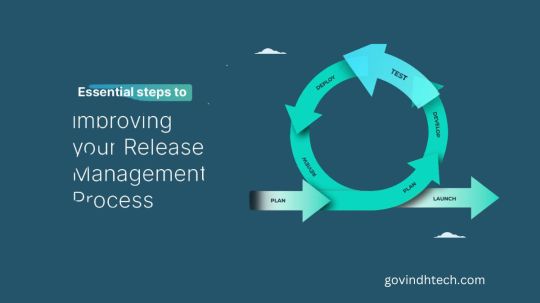
Software Deployment Lifecycle: The route from development to production is crucial to customer value as organizations adopt cloud native and everything as code. The “pathway to deploy,” or process, involves many complex stages and decisions that might affect an organization’s capacity to provide software rapidly, consistently, and at scale.
The first post in this series explores the complexities and options for a seamless and effective deployment pathway.
Enterprise cloud-native software development is constantly changing, thus this post gives a maturity model and building blocks to speed the software supply chain lifecycle.
Deployment Pathway to roadmap
Several parties and moving elements must collaborate to hasten deployment. IBM offer a 4-stage implementation, as explained below.
Stage 1: Development Automation
Automation is a good place to start because infrastructure and pipeline automation are self-contained inside the development team. Building an enterprise database of CI/CD/CT and Ops patterns with tooling integrations to automate core development and testing is the focus at this level. Automation of testing capabilities (test data preparation and execution of test cases across different systems is mainly semi-automated) is the hardest element of this stage due to enterprise complexity. Overall, the Cloud Capability Centre (CCC) or core team drives transformation alongside application and platform teams.
Stage 2: Establish pattern-driven model
CCC (or its equivalent) works with the architectural board to create repeatable patterns, including atomic and composite application patterns for cloud services. Architecture review and other review processes are updated to institutionalize pattern-centric architecture representations, with a backlog for platform engineering and CCC to develop these patterns as code. Aids adoption and acceleration. Eventually, the applications become patterns that standardize development models. Using patterns like highly available multi-region architectures, business continuity, resiliency, and security teams will recognize and accelerate approval gates in a standardized manner. This alignment depends on partner organizations co-creating these patterns.
Stage 3: Self-service, cross-functional integration
Many organizations in enterprises desire cloud applications to match their guidelines and best practices. Integration of cross-functional teams like security, compliance, and FinOps is done through automation, tooling, defined patterns, or self-service. This emphasizes meaningful team participation from earlier stages. Important elements of this stage:
Build and align high-availability patterns with resiliency teams to accelerate reviews and show compliance.
Codify security and compliance requirements into patterns and enforce them on the platform as policies.
Integrate vulnerability scans, policy check tools (like cloud formation guard for AWS), and container security with shift-left pipelines to validate addresses.
Enterprise records teams can investigate data classification and retention patterns, while FinOps teams can check tagging and quota adherence.
Create AuthN/AuthZ integration patterns to abstract nuances and standardize application, data, and service authentication and authorization.
Generate resource files from IaC execution and import them to firewall systems to automate firewall.
Platform Engineering corporate catalog with self-service features.
Stage 4: Automated software deployment
This level decentralizes and decouples enterprise groups while automating and integrating them with DevSecOps. One example is change management automation, including release note creation, where the system automatically creates full change review checklists using data from various interconnected systems. This boosts review credibility, efficiency, and accuracy. This holistic strategy boosts company operating efficiency and risk avoidance.
Path to deployment: Cloud-native model components
Let’s examine several acceleration software deployment use scenarios.
Example 1: Persona-centric IaC codification
Persona- and pattern-based IaC codification speeds development and evaluation.
Product teams must manually code and stakeholders must manually review each issue, which takes time. Product teams can build stakeholder trust and review efficiency by coding these in hardened discrete or composite patterns with Bootstrap code and acceleration.
Example 2: Shift-left security and policy validation
Automation of infrastructure security, compliance, and other policies in CI/CD pipeline. This guarantees that installed infrastructure meets enterprise policies before software deployment. This can be done with cloud provider and open-source tools like Checkov, Cloud formation guard, and cfn-nag. Security teams write policy validation rules, and product teams integrate them into CI/CD/CT pipelines before cloud infrastructure is provisioned.
Example 3: Automated review compliance evidence gathering
Cross-functional cloud platform, security, and compliance teams automate evidence collection to speed up evaluations. This usually requires querying deployed cloud resources using Cloud APIs and creating compliance evidence and posture. Product teams could conduct self-service or DevOps pipeline automation to determine compliance posture and automatically capture review data. When evidence is captured automatically and reviewed hands-free, maturity grows.
Example 4, integrated patterns and pipeline toolkit
Creating composite cloud-native patterns like AWS Active-Active Serverless APIs requires numerous separate patterns. Patterns include:
Cloud services: Route53, API Gateway, Lambda, Dynamo DB, IAM, CodeDeploy, CodeBuild, CodePipeline, CodeCommit.
Nonfunctional requirements include AuthN/AuthZ, multi-region active-active software deployment, security at rest and in transit, tracing, logging, monitoring, dashboards, alerting, failover automation, and health checks.
Integration of enterprise tools including Code Quality, SAST, DAST, Alerting, Test Management, tracking, and planning.
A one-click solution would let product teams choose the proper pattern to produce Bootstrap code that merges many codified patterns from previous use cases.
Methods of Software deployment
The delivery model deployment path includes these steps:
Define the full application lifecycle phase, activity, deliverable, and dependent group path to software deployment.
Create various squads to focus on different software deployment aspects.
Plan a squad flex strategy to bring in support groups as needed.
Create Cloud Capability Center squad backlogs and start capability development.
Follow the 4-stage maturity paradigm to track enterprise maturity.
Product teams and stakeholders should be formed during backlog refinement and prioritization.
Stay focused on automation adoption. Automation and adoption are key to pathway to deploy success.
Manage deployment pathway knowledge and planning centrally.
Help product teams include these tasks into their delivery plans with project tracking and agile collaboration platforms like Jira.
Measure pathway to implement phase gate SLAs and track SLA improvement as capabilities advance.
Consider why cloud transition may not provide full value and identify release lifecycle acceleration as a critical barrier to limit the deployment channel. Pathway to deploy can help different groups expedite the full software supply chain lifecycle beyond development and testing. The 4-stage roadmap begins with DevSecOps and patterns adoption and progresses to product engineering culture. Product teams should decentralize their collaboration with corporate units to use automation and self-service. The maturity model encourages firms to start small and scale progressively, and our delivery approach makes this complex path predictable.
Read more on Govindhtech.com
0 notes
Text
facilitation software with deployment for individuals
Xleap: Empowering Individuals with Seamless Facilitation Software Deployment
Description: Embrace an effective and transformative collaboration with Xleap’s facilitation software designed for individuals. Our platform offers a user-friendly interface and hassle-free deployment, ensuring a smooth experience for solo professionals and small teams. Xleap helps harness the power of streamlined communication and increases productivity. Our facilitation software with deployment for individuals is specially designed for individual empowerment. Experience the freedom to deploy our intuitive tools effortlessly, which allows you to focus on your goals without the burden of complex setups. Experience efficiency, connectivity, and productivity like never before. https://www.xleap.net/deployments
0 notes
Text
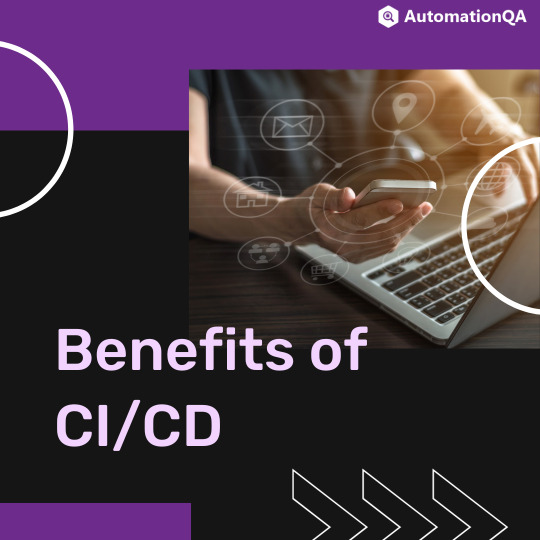
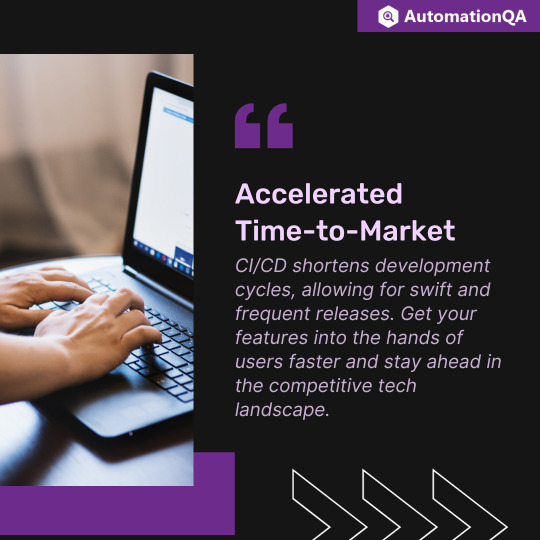
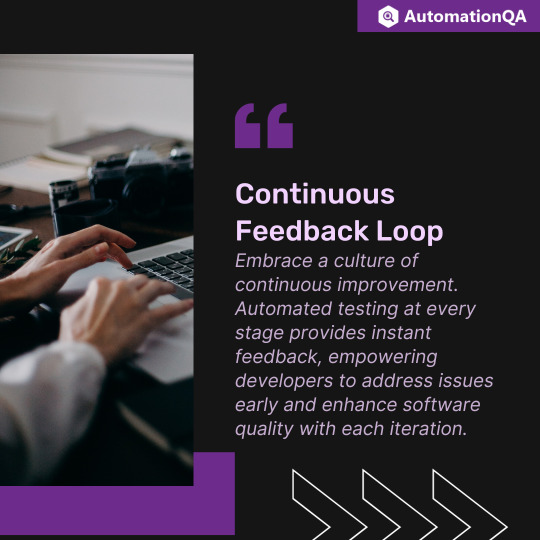

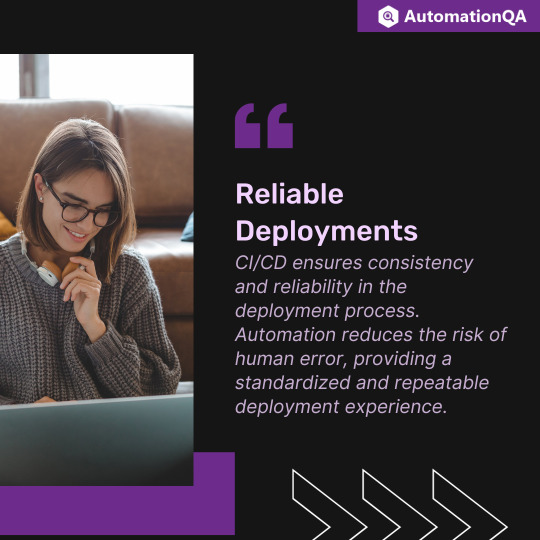

Unlocking the power of continuous innovation! 🚀 Embrace the Benefits of CI/CD for faster development cycles, improved collaboration, and seamless deployment.
💻⚙️ Elevate your software delivery game with efficiency and precision.
#power#innovation#benefits#cicd#development#collaboration#deployment#software delivery#efficiency#precision
0 notes
Text
Mobile App Deployment And Distribution: App Stores And Beyond

Are you ready to take your mobile app from zero to hero? In today’s digital era, having a killer app idea is just the beginning. To truly reach the masses and make an impact, you need a solid deployment and distribution strategy. Enter: App Stores and Beyond! This blog post will delve into the exciting world of mobile app deployment and showcase how app stores can catapult your creation to new heights. But we won’t stop there – we’ll also explore alternative methods that go beyond traditional platforms. So buckle up, because it’s time to conquer the app universe like never before!
Introduction to Mobile App Deployment and Distribution
Mobile app deployment and distribution refers to the process of making a mobile application available for users to download and use. It involves various steps from developing the app to making it accessible on different platforms such as app stores, third-party websites, or through direct downloads.
In today’s digital age, with the increasing use of smartphones and tablets, having a mobile app is essential for any business or organization. However, simply creating an app is not enough – it needs to be deployed and distributed effectively in order to reach its target audience.
In this section, we will discuss the basics of mobile app deployment and distribution, including the different methods used and their advantages.
App Stores: The Primary Platform for App Distribution
The most popular platform for distributing mobile apps is through official app stores like Google Play Store for Android devices and Apple App Store for iOS devices. These stores have become the go-to destination for users when they want to download new apps.
Submitting your app to these stores comes with several benefits. Firstly, it gives your app credibility as it goes through a rigorous review process by the store before being made available to users. This ensures that only high-quality apps are listed on these platforms. Additionally, being featured on these stores can significantly increase your visibility and reach a wider audience globally.
Importance of a Strategic Distribution Plan for Mobile Apps
The success of a mobile app largely depends on its distribution strategy. With millions of apps available in various app stores, it can be challenging for an app to stand out and reach its target audience. This is where a strategic distribution plan comes into play.
A strategic distribution plan outlines the steps and tactics that will be used to get an app in front of its intended users. It involves careful planning, research, and execution to ensure maximum visibility and downloads for the app. Here are some key reasons why a strategic distribution plan is essential for mobile apps:
1. Reaching the Right Audience: A well-crafted distribution plan helps in identifying the target audience for the app. By understanding their demographics, interests, and behavior patterns, marketing efforts can be tailored accordingly to reach them effectively. For example, if the target audience is young adults who spend most of their time on social media, then promoting the app through influencer marketing or targeted ads on social media platforms would be more effective than traditional methods like TV commercials.
2. Increasing App Visibility: The competition in the app market is fierce, with thousands of new apps being released every day. In such a scenario, having a strong distribution plan can significantly increase an app’s visibility among potential users. App store optimization (ASO) techniques such as keyword optimization, compelling visuals, and positive reviews can help improve an app’s ranking in search results within the respective app store.

Understanding Different App Stores (Apple App Store, Google Play Store, etc.)
App stores are the primary channels through which mobile apps are distributed to users. As an app developer, it is important to understand the different app stores available and their unique features in order to successfully deploy your app and reach a wider audience.
1. Apple App Store:
The Apple App Store is the official marketplace for iOS devices such as iPhones, iPads, and Macs. It boasts over 2 million apps and has generated billions of dollars in revenue for developers. To distribute your app on the App Store, you will need to enroll in the Apple Developer Program which requires a yearly fee of $99.
One of the key advantages of the App Store is its strict review process. Every app submitted to the App Store goes through a rigorous review by Apple’s team of experts to ensure quality, security, and compliance with their guidelines. This ensures that users can trust the apps they download from the store.
Additionally, Apple provides useful tools such as TestFlight for beta testing and analytics for tracking user engagement and retention. However, there are also some limitations with regards to customization options and pricing models on the App Store.
2. Google Play Store:
The Google Play Store is the largest app store in terms of number of apps available (over 3 million) and number of downloads (billions). It caters to Android devices including smartphones, tablets, wearables, TVs, and cars.
Unlike the App Store, the Play Store has a more open distribution model, allowing developers to easily publish their apps without a strict review process. However, Google does have guidelines in place and will remove apps that violate their policies.
The Play Store also offers various monetization options such as in-app purchases, subscriptions, and ads. It also provides robust analytics tools and beta testing options through the Google Play Console.
Pros and Cons of Each App Store
When it comes to deploying and distributing your mobile app, one of the first decisions you will need to make is which app store(s) to use. App stores serve as a platform for users to discover and download apps, making them an essential part of the app distribution process.
There are several major app stores available, each with their own pros and cons. In this section, we will explore the benefits and drawbacks of some of the most popular app stores.
1. Apple App Store:
The Apple App Store is the official marketplace for iOS apps. It boasts over 2 million apps and has generated billions of dollars in revenue for developers. Its strict review process ensures that all apps meet certain quality standards, giving users confidence in their purchases.
Pros:
– High-quality apps: As mentioned, Apple’s review process ensures that only well-designed and functional apps make it onto the App Store.
– Large user base: With millions of active iPhone and iPad users, the App Store offers a vast potential audience for your app.
– Simple purchasing process: The App Store makes it easy for users to purchase your app with one click using their Apple ID.
– Built-in marketing tools: The “Featured” section on the App Store highlights new or popular apps, giving developers valuable exposure.
Cons:
– Strict guidelines: The strict review process can be frustrating for developers who may have to make multiple changes before getting their app approved.
– Limited customization options: Developers have limited control over how their app listing appears on the App Store, making it challenging to stand out from competitors.
– Revenue sharing: Apple takes a 30% cut of all app sales on the App Store, which can significantly impact developer profits. – Limited to iOS: The App Store is only accessible for users with Apple devices, limiting your potential audience.
2. Google Play Store:
The Google Play Store is the official marketplace for Android apps. It has a larger app selection than the App Store, with over 3 million apps available. It also offers a more flexible review process, giving developers more control over their app’s release timeline.
Pros:
– Large user base: With over 2 billion active Android devices, the Play Store offers a vast potential audience for your app.
– Flexible review process: Unlike the App Store, developers can publish their apps on the Play Store without going through a strict review process.
– Customization options: Developers have more control over how their app listing appears on the Play Store, allowing them to differentiate their app from competitors.
– Lower fees: Google takes a smaller cut (15%) of all app sales on the Play Store compared to Apple’s 30%.
Cons:
– Quality concerns: With a less stringent review process, there may be more low-quality or potentially harmful apps on the Play Store.
– Fragmentation: The wide variety of Android devices and versions make it challenging to ensure compatibility for all users.
Beyond the App Stores: Other Distribution Channels for Mobile Apps (Third-party app stores, social media platforms, etc.)
When it comes to distributing your mobile app, the app stores may be the first thing that comes to mind. However, there are many other distribution channels available that can help you reach a wider audience and increase your app’s visibility. In this section, we will explore some of these alternative distribution channels beyond the traditional app stores.
1. Third-party App Stores:
While Google Play Store and Apple App Store dominate the market share for mobile apps, there are several third-party app stores that have gained popularity in recent years. These third-party platforms offer developers an alternative way to distribute their apps and reach users who may not use the main app stores.
Some popular third-party app stores include Amazon Appstore, Samsung Galaxy Apps, GetJar, and Aptoide. Each of these platforms has its own unique user base and offers different features for developers such as better revenue sharing models or access to specific markets.
It is important to note that distributing your app through third-party stores does come with risks such as potential security threats or lower quality control compared to the official app stores. Therefore, it is important to thoroughly research and evaluate each platform before deciding on which ones to utilize for your app’s distribution.
2. Social Media Platforms:
Social media platforms have become an integral part of our daily lives and offer a huge potential for promoting and distributing mobile apps. With millions of active users on social media sites like Facebook, Instagram, Twitter, LinkedIn etc., you can tap into a massive pool of potential users.
Through social media, you can connect with your target audience, promote your app, and even offer exclusive discounts or promotions to drive downloads. You can also leverage paid advertising options on these platforms to reach a wider audience and boost your app’s visibility.
3. Mobile Ad Networks:
Mobile ad networks are another effective way to distribute your app beyond the app stores. These networks allow you to advertise your app across various mobile apps and websites, reaching a large number of potential users.
There are different types of mobile ad networks, such as interstitial ads, banner ads, and native ads. Each type has its own advantages and targeting capabilities that can help you reach specific audiences based on demographics, interests, or behavior.
4. Websites and Blogs:
Having a dedicated website or blog for your app is an excellent way to showcase its features and attract users. You can use search engine optimization techniques to improve your website’s visibility in search results and drive organic traffic to your app.
You can also collaborate with influential bloggers or content creators in your niche to review or feature your app on their platforms. This can help increase awareness about your app and attract new users.
Best Practices for Submitting an App to an App Store
Submitting an app to an app store is a crucial step in the mobile app deployment process. It allows your app to reach a wider audience and gain credibility and visibility in the competitive world of mobile apps. However, with thousands of apps being submitted daily, it is important to ensure that your app meets all the necessary guidelines and best practices for a successful submission. In this section, we will discuss the top 5 best practices for submitting an app to an app store.
1. Familiarize Yourself with App Store Guidelines:
Before submitting your app, it is essential to go through the guidelines provided by the respective app store carefully. Each platform has its own set of rules and requirements that need to be met before an app can be approved for listing. Some common guidelines include content restrictions, user interface design standards, security protocols, and payment policies. By familiarizing yourself with these guidelines beforehand, you can avoid any potential issues or delays during the review process.
2. Test Your App Thoroughly:
A well-functioning and bug-free application is more likely to get accepted by an app store than one with frequent crashes or glitches. It is crucial to thoroughly test your app on different devices and operating systems before submission. This not only ensures a smooth user experience but also helps identify any compatibility issues that may arise on certain devices or platforms.
Tips for Maximizing App Visibility and Downloads
As a mobile app developer, you’ve put in countless hours of hard work and dedication into creating the perfect app. However, all that effort would go to waste if your app does not get the visibility and downloads it deserves. With millions of apps available on various app stores, it can be challenging to stand out from the crowd and attract users to download your app. In this section, we will discuss some essential tips for maximizing your app’s visibility and increasing its downloads.
1. Optimize Your App for App Store Search:
The first step in increasing your app’s visibility is ensuring that it appears at the top of relevant search results on the app store. This can be achieved by optimizing your app’s title, description, keywords, and screenshots for the search algorithm used by each individual store. Conduct thorough keyword research and include them strategically in these elements to improve your chances of ranking higher in search results.
2. Utilize Social Media:
Social media platforms have become an integral part of our daily lives, making them ideal channels for promoting your mobile app. Create accounts on popular social media sites such as Facebook, Twitter, Instagram, LinkedIn etc., where you can share information about your app with a vast audience base. Use eye-catching visuals like images and videos to showcase what makes your app unique and encourage users to download it.
Conclusion:
As we have seen, app stores have played a crucial role in the deployment and distribution of mobile apps. However, with the rapid advancements in technology and the ever-changing landscape of the mobile industry, it is important to consider what lies ahead for this method of app delivery.
One trend that is already shaping the future of mobile is the rise of progressive web apps (PWAs). These are web applications that offer an app-like experience without being downloaded from an app store. PWAs are gaining popularity due to their ability to work across different platforms and devices, as well as their faster loading speeds compared to traditional native apps. This could potentially challenge the dominance of app stores in the coming years.
#Mobile App Deployment And Distribution: App Stores And Beyond#wordpress themes#web devlopment#app development#web development#webdevelopment#software devlopment company#app devlopment#digital marketing#graphic design#web design#black and white#webdesign#world politics
1 note
·
View note
Text
Top 5 Tips to Implement MES Software for SMBs

Implementing MES software for small manufacturing business can be challenging and here we provide top tips for smooth MES deployment for your manufacturing unit.
0 notes
Text
ElasticScale- Crafting AWS Mastery for Tech Visionaries - Technology Org
New Post has been published on https://thedigitalinsider.com/elasticscale-crafting-aws-mastery-for-tech-visionaries-technology-org/
ElasticScale- Crafting AWS Mastery for Tech Visionaries - Technology Org
Technology.org is a platform dedicated to the dissemination of scientific and technological information. In this spirit, we are proud to introduce ElasticScale, the AWS consultancy firm that embodies the innovative use of technology for start-ups and scale-ups.
Image credit: Christina Morillo via Pexels, free license
Under the guidance of Alex Jeensma, a CTO with a vast 7-year experience in AWS, ElasticScale serves as a beacon of expertise for those who find AWS to be a convoluted challenge. With AWS certifications and a comprehensive background in DevOps and enterprise software delivery, Alex founded ElasticScale in The Netherlands with a global vision: to render AWS a transparent, cost-effective, and scalable tool for the SaaS industry.
ElasticScale’s philosophy is rooted in the power of automation, using Terraform to assure a consistent and resilient deployment of infrastructure across multiple environments and regions.
We can service this type of companies to reduce their AWS bill
Our array of services is meticulously designed to address the specific needs of:
– Start-ups: We provide a robust AWS reference architecture, inclusive of best practices and Terraform, ensuring start-ups have a solid foundation for growth. We also assist in obtaining AWS credits to help neutralize infrastructure costs in the crucial first year.
– Scale-ups: Our subscription-based service allows scale-ups to remain focused on product development by entrusting us with their AWS management, leveraging our specialist knowledge for faster, more efficient outcomes.
– Venture Capitalists: For those with stakes in AWS-reliant companies, our no-cure-no-pay portfolio scan ensures that their investments are maximizing AWS in the most cost-efficient manner, often leading to an average of 30% in cost savings.
ElasticScale is not just about promises; our track record includes a substantial reduction of AWS costs by 70% for a scale-up client, all while maintaining their service’s performance.
Offers by ElasticScale.cloud
We offer versatile payment options to fit every company’s needs:
– A fixed hourly rate for precise consultancy projects.
– Monthly subscription models designed for the continuous requirements of scale-ups.
– A results-based no-cure-no-pay model where our fees correspond to the AWS savings we achieve for you.
– An option for payments through AWS IQ, simplifying billing and allowing for the utilization of AWS credits towards our services.
ElasticScale extends an invitation for a no-strings-attached, 60-minute consultation to explore your AWS infrastructure needs, bookable directly via our website. We also offer a referral fee for new client introductions.
Visit https://elasticscale.cloud for actionable insights, including cost-saving tips for 145 AWS services, and take advantage of our free 15-minute AWS bill check.
ElasticScale is more than a AWS consultant; we are a partner in your technological journey, ensuring that your AWS infrastructure is as advanced and adaptable as the tech world demands.
#Amazon Web Services (AWS)#architecture#automation#AWS#background#Certifications#challenge#Cloud#Companies#comprehensive#continuous#cost savings#CTO#deployment#development#Devops#enterprise#Enterprise Software#Fintech news#Foundation#Global#growth#hourly#Industry#Infrastructure#insights#investments#iq#management#model
0 notes